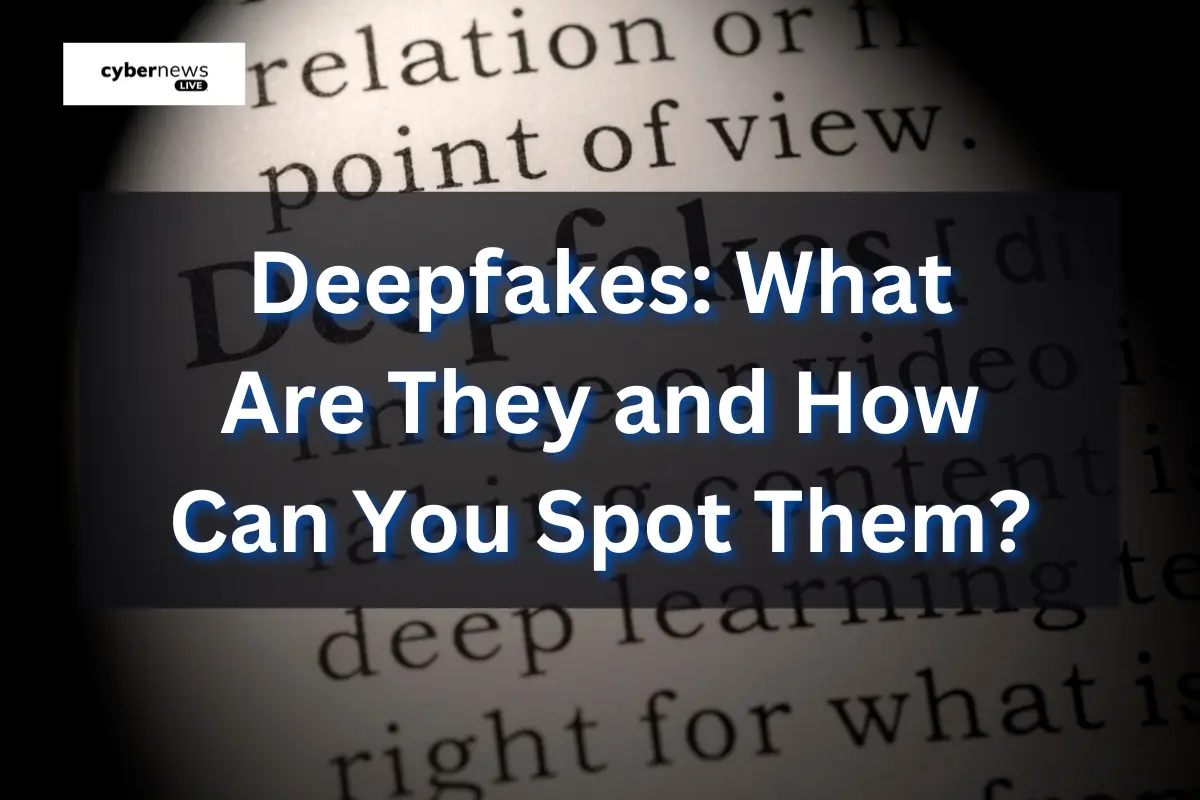
Deepfakes: What Are They and How Can You Spot Them?
Deepfakes represent a category of synthetic media generated through advanced artificial intelligence techniques, particularly deep learning. These manipulative creations involve altering or substituting existing content with convincingly realistic material, often with the intent to deceive or manipulate viewers. Deepfakes have emerged as a potent tool with potentially dire consequences, including scams, identity theft, election interference, and the widespread dissemination of false information. Their security implications are substantial, given their capacity to impersonate individuals and illicitly access sensitive data. Detecting deepfakes requires a discerning eye and a systematic approach. It involves scrutinizing the content for anomalies or inconsistencies, placing a particular focus on the eyes within the content, conducting a granular examination of the media, assessing the quality of motion and behavioural aspects, and verifying the credibility of the source. Such measures are indispensable in safeguarding individuals, organizations, and society at large from the multifaceted risks posed by deepfakes.
The powers and ingenuity of Artificial Intelligence (AI) tools are continually improving. Generative AI can now generate human-like writing and images, while 3D animation software brings these visuals to life. With limited input, voice synthesis tools can even replicate people’s voices.
The wonderful aspect is that these breakthroughs are no longer restricted to Hollywood studios; they are now available to everyone. Almost anyone can create realistic images, audio, and movies that resemble genuine people and locations using simple software. When these talents get into the hands of the wrong people, they become tools of deception.
We typically rely on our ability to recognize voices and appearances to identify individuals. But when AI can generate replicas of real people with the intent to deceive, it poses a significant cybersecurity risk. The following information aims to help you guard against potential deception by individuals who misuse deepfake technology.
What is a Deepfake?
A deepfake is a combination of the words “deep learning” and “fake,” and it refers to a sort of synthetic media made with artificial intelligence techniques, specifically deep learning. Deepfakes can involve modifying or completely replacing existing content, such as photos, videos, audio recordings, or text, with generated or modified material that appears to be extremely realistic. These works can give the impression that someone spoke or did something they never said or did.
Deepfakes are powered by neural networks, which are computer algorithms designed to mimic the way the human brain works. These networks can analyse and handle massive volumes of data, allowing for the creation of highly convincing fake material. Deepfake technology can be used for a variety of purposes, including superimposing one person’s face onto another’s in videos and producing fabricated speeches or text.
Deepfakes raise concerns because of their ability to deceive, manipulate, or impersonate individuals, as well as the far-reaching ramifications for privacy, security, and misinformation. To protect against their misuse, it’s critical to understand the nature of deepfakes, how they work, and how to detect them.
What are Deepfakes Used for?
1. Scams and Fraud
Deepfakes can be maliciously employed for scams and fraud. Scammers create fabricated videos or audio recordings of influential figures, such as CEOs or government officials, to deceive employees or the public into transferring funds, disclosing sensitive information, or taking harmful actions.
2. Identity Theft
Deepfakes pose a significant threat to personal privacy. Criminals can generate counterfeit content featuring an individual’s likeness and voice, enabling identity theft. This stolen identity might be used for financial fraud, impersonation, or other malicious purposes.
3. Election Manipulation and Conspiracies
Deepfakes can be wielded to manipulate public opinion and disrupt political processes. False videos or audio recordings can be used to discredit candidates, spread misinformation, or fabricate evidence of election interference, sowing distrust in democratic systems.
4. Celebrity and Political Hoaxes
Deepfakes are used to fabricate speeches, interviews, or statements by celebrities and politicians. These deceptive videos can be employed for entertainment or satire but also for maligning or ridiculing public figures, potentially causing reputational harm or public confusion.
How Deepfakes Pose a Threat to Security
Our online actions in today’s digital world mostly rely on technologies that verify our identities, primarily emphasising distinctive characteristics such as our voice and facial features. Now that artificial intelligence (AI) techniques are available to fake these characteristics, each digital identity checkpoint poses a security risk.
Cybercriminals have already embraced tactics such as vishing and spoofing to perpetrate identity theft. The recent accessibility of voice generation and image manipulation tools has significantly simplified their endeavours. These malefactors can employ synthesized voices to impersonate colleagues, trusted suppliers, or high-ranking executives in phone conversations. Fabricated identities grant them unauthorized access to employee portals, banking services, or entry into video conferences.
Organizations, in particular, face substantial risks tied to deepfake-enabled CEO fraud. Top executives’ extensive digital footprints on news and social media platforms provide scammers with ample source material to craft convincing counterfeits. Unsuspecting employees may unwittingly act on instructions they believe are coming from their CEO, releasing funds or disclosing sensitive information.
How to Spot Deepfakes
In light of the growing prevalence of deepfakes, safeguarding yourself involves vigilance and careful observation. When interacting with digital content, adopt these practices, recommended by experts, to bolster your ability to identify deepfakes and fortify your defences:
- Visual Analysis: Scrutinize the content closely. Images or videos manipulated by deepfake generators may exhibit peculiar features like distorted fingers, smudges, or anomalies absent in genuine visuals.
- Focus on the Eyes: Pay attention to the eyes. Deepfake videos often display irregular blinking patterns or a lack of natural light reflections in both eyes.
- Zoom In: Examine the content at a closer level. Look for digital irregularities, unusual skin tones, or discrepancies between facial features and backgrounds.
- Assess Movement Quality: Observe the movement patterns. Deepfake videos may reveal robotic or unnatural motions, lack of tongue movement synchronization, and discrepancies in lip movements.
- Source Verification: Verify the authenticity of the video or voice clip by ensuring it originates from a known and trustworthy source.
- Secure Communications: Employ security measures in your communications. Initiate phone conversations with colleagues using secret passwords or specific questions. If the speaker cannot comply, there may be reason to suspect a voice clone.
By incorporating these techniques into your digital interactions, you can enhance your ability to detect and guard against deepfake threats effectively.
In A Nutshell
While deepfake detection technology is advancing, its progress lags behind the pace at which malicious actors exploit these deceptive techniques. To shield organizations and individuals from the perils of deepfake attacks, it’s imperative to equip them with the necessary knowledge and skills. The most effective safeguard for you, your employees, and your business is cybersecurity awareness training. Providing concise, pertinent training sessions that educate individuals on red flags to watch for, along with practical exercises in detection methods, can make the distinction between averting CEO identity theft and an ordinary workday.
CTA
Learn how to strengthen your cybersecurity strategy and protect your digital assets from deepfake threats. At Cyber News Live, we publish helpful hints and best practises for strengthening your defences.




